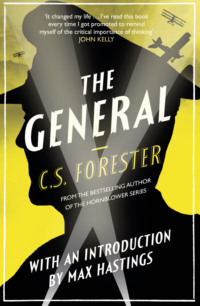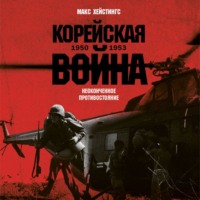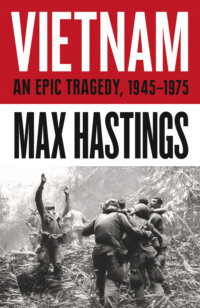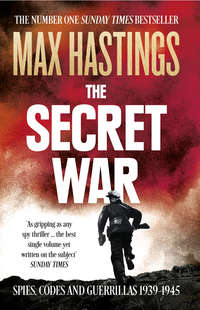
Полная версия
Chastise: The Dambusters Story 1943
This may have sounded persuasive, but it was in fact ill-founded: since the Dale Dyke dam had a clay rather than a cement core, it was not comparable with the Sorpe. The planners eventually decided that the Wallis bombs used against the Sorpe must be dropped following a lateral, overland approach, without backspin, to sink and explode on time fuses rather than by pressure upon a hydrostatic pistol. It seems remarkable that Wallis or anyone else supposed that Upkeeps would thus achieve their purpose-designed ballistic effect any more than might any other explosive charge of similar size – in other words, a conventional bomb. It is hard not to suspect that the engineer asserted the plausibility of destroying the Sorpe because he feared that if he did not do so, the entire commitment to Chastise would once more be thrust into doubt because of that dam’s strategic centrality.
On 25 March another meeting of the Air Ministry committee, attended by an array of brass representing both the Royal Navy and the RAF, including Saundby from Bomber Command, was told that construction of the ‘Type 464 Provisioning’ Lancaster variants was proceeding on schedule. Sixteen Mosquitoes were also being readied to carry Highball. Forty inert Upkeeps had been constructed for test purposes.
Two important, related tactical decisions were made. The first was that moonlight would be essential, to enable crews to drop their weapons with the necessary accuracy. Normal Bomber Command ‘ops’ did not take place under such conditions, which made aircraft of Harris’s Main Force easy prey for night-fighters, responsible for almost three-quarters of Luftwaffe ‘kills’ of British bombers. Thus, the Chastise attackers would fly all the way to their targets at very low level, below the German radar threshold, where they would be hard for fighters to spot or engage. The principal menaces to the Lancasters’ survival would be light flak – anti-aircraft gunfire – and such physical hazards as power lines.
Even as these issues were being thrashed out, at High Wycombe Harris made the only significant decision with which he, as a declared Chastise sceptic, was entrusted: which aircrew should fly the operation? The C-in-C determined that they should be drawn from 5 Group, an elite formation that he himself had commanded earlier in the war. He instructed its new AOC, Ralph Cochrane, that instead of diverting a line squadron to attack the dams he should form a new, special one. He also identified the officer who should lead it.
2 GIBSON
And so to Wing-Commander Guy Penrose Gibson, the man with the dog; the short, sad twenty-four-year-old with the brilliant smile who became a national hero. At the Air Ministry meeting of 15 February Saundby, newly promoted to become Harris’s deputy, asserted that ‘two weeks would provide sufficient time in which to train crews for this operation’ – which said more about his own and his chief’s insouciant attitude to Chastise than about their understanding of the supreme challenge their fliers were about to be invited to undertake. For years the vexed debate about an air attack on Germany’s dams had focused upon means – devising weapons that might make possible such a stroke. Now, however, the spotlight shifted: towards the very young men, still unknowing two months before they took off, who would be called upon to fulfil the vision of Barnes Wallis.
Gibson was about to go on leave to Cornwall, after receiving a second DSO for his distinguished tenure commanding 106 Squadron, when on the afternoon of 14 March 1943 he was summoned to Grantham to see 5 Group’s chilly, clever new AOC. The Hon. Ralph Cochrane, by common consent Harris’s outstanding subordinate, was an autocrat possessed of better manners and more imagination than his superior at High Wycombe, especially about means of attacking Germany from the air. He was a scion of a smart Scottish family – his father was an army officer turned Unionist politician, ennobled in 1919. Ralph, one of five children, entered the Royal Naval College, Osborne, aged thirteen in 1908, the year in which the Wright brothers made their first flights in Europe.
While flying airships on convoy escort duty during the First World War, he met Barnes Wallis. Cochrane once tried to sink a German submarine by dropping four 8-lb bombs on it, without convincing either himself or the enemy of the efficacy of air power. He was still an airship man when he encountered Sir Hugh ‘Boom’ Trenchard, wartime commander of the Royal Flying Corps and founding father of the RAF. ‘Young man,’ said Trenchard, ‘you’re wasting your time. Go and learn to fly an aeroplane.’ Within a few years, Cochrane was serving as a flight commander in Iraq, where Arthur Harris was converting Vernon troop-carriers into bombers on his own initiative, and experimenting with the prone position for bomb-aiming. In 1937 Cochrane became a founding chief of staff for New Zealand’s air force. By 1943 he was recognised as one of the RAF’s ablest senior officers, described by a navigator in one of his squadrons, later the offensive’s official historian, as ‘a ruthless martinet’.
A bewildered Gibson was kept hanging around for several days at St Vincent’s Hall, the rambling Victorian mansion boasting its own tower and spire in which 5 Group had its headquarters. He wrote: ‘Group headquarters are funny places. There is an air of quiet, cold efficiency. Waafs keep running in and out with cups of tea. Tired men walk through the corridors with red files under their arms. The yellow lights over the doors of the Air Officer Commanding and [his senior staff officer] are almost always on, showing that they are engaged.’ Gibson’s account of his encounter with Cochrane, which appears finally to have taken place on Thursday, 18 March, is probably roughly accurate: ‘in one breath he congratulated me on my bar to the DSO, in the next he suddenly said: “How would you like the idea of doing one more trip?”’
This was an extraordinary demand to make of an exhausted young officer who had already done more towards winning the war than could reasonably be asked of any man. Yet Harris did not hesitate to instruct Cochrane to make it. Whatever the C-in-C’s doubts about Wallis, Upkeep and dams, he possessed sufficient guile to be determined to ensure that, since Chastise was to happen, his own brand should be stamped upon it. It was thus logical that he should nominate a protégé to lead the special squadron to be formed to fulfil Portal’s fantasy. When Gibson was nominated for a second DSO, Cochrane – who appears previously to have met him only once or twice – queried the award, suggesting that a third DFC would be more appropriate. Harris sharply overruled him: ‘Any Captain who completes 172 sorties in an outstanding manner is worth two DSOs, if not a VC. Bar to DSO approved.’
Gibson wrote later about Cochrane’s proposal at St Vincent’s: ‘I gulped. More flak, more fighters. “What kind of trip, sir?” “A pretty important one, perhaps one of the most devastating of all time. I can’t tell you any more now. Do you want to do it?” I said I thought I did, trying to remember where I had left my flying kit.’ Gibson momentarily supposed that he was being invited to undertake the special mission that very night, or the next. Yet for such a man as himself, who had come to know no other life save bombing, who was justly proud of being the best, the defier of fate, it was unthinkable that he should have said no.
Some commanders might have hesitated to make the request, however, in the face of Gibson’s exhaustion, observed by all those who spent time with him, and manifested in severe attacks of pain in his feet. Immense labour was involved in recruiting, establishing and training a new squadron, comprising some five hundred men. In addition, its commander must meet Barnes Wallis; address technical issues with Vickers and Avro; discuss tactics with 5 Group staff officers; plan operational details; exercise in the air with whatever scratch crew he himself might assemble. Gibson did not yet know what he and his men would be asked to do, but Harris did, and Cochrane. The C-in-C and 5 Group’s AOC were indeed ruthless men. How could they have fulfilled their roles, towards both the German people and their own aircrew, had they been anything else?
Three days later Cochrane saw Gibson again, and told him somewhat more: he was to form a special unit to execute the special operation, which could not take place for two months. He introduced the airman to Gp. Capt. Charles Whitworth, base commander at Scampton, four miles north of Lincoln, where ‘Squadron X’ would be based. Secrecy would be vital. For the time being, however, all that Gibson need know about the target was that he must train his crews and prepare his aircraft to fly very, very low. On the afternoon of Sunday, 21 March Gibson drove through the gates of Scampton bomber station to embark upon two months of extraordinary exertion, which would define his short life.
Most human beings have their demons, but the new commander of the squadron that within days became 617, the number allocated by the Air Ministry in a natural succession, was tormented by more than most. He was born in the Punjab in 1918, third child of an unhappy marriage between Leonora, a nineteen-year-old Englishwoman, and Alex, a much older officer of the Indian Forestry Service, himself born in Russia. Guy spent his early childhood pampered by the tribe of domestic attendants customary among servants of the Raj, which some of his critics claimed influenced the abruptness with which he later treated comrades of a lower caste. He was only six, however, when his mother abandoned her husband and travelled to England to place Guy in an English school.
Once ‘home’, Nora Gibson became an alcoholic. Her son was a fifteen-year-old pupil at St Edward’s, a minor public school in Oxford, when his mother was given a three-month prison sentence for a series of offences involving dangerous driving and causing injury to pedestrians. A psychologist described her as prone to ‘erratic, impulsive and excitable behaviour’. Guy thereafter saw little of her; on Christmas Eve 1939, aged forty-four, she suffered a ghastly lingering death after her clothes caught fire on becoming entangled in an electric stove while she was drunk. It is unrecorded whether Gibson heard the news immediately, but that night he became paralytically drunk at a mess party, and hurled a succession of fire extinguishers through a glass window. He makes no mention of his mother’s death in his memoir, but it is impossible to doubt its impact upon him.
Ralph Cochrane once described Gibson as ‘the sort of boy who would have been head prefect in any school’, but at St Edward’s he achieved neither distinction nor notoriety, academically or as a sportsman. Like so many of his contemporaries, the ‘Lindbergh generation’, he forged an early passion to fly, but his first application to join the RAF was rejected. The Battle of Britain conferred supreme glamour on fliers as the ‘Brylcreem boys’, jealously mocked by soldiers and sailors after an airman’s image was adopted to advertise the hair cream. Before 1940, however, pilots lacked social cachet. Indeed, they had a rueful pre-war joke that a flier would sooner tell people he was a pianist in a brothel than admit to being a member of the RAF. Even after hostilities began, while many British aristocrats enlisted in the army and some in the Royal Navy, very few became pilots. The aircrew of 617 Squadron eventually included several public schoolboys and one Etonian, but none were authentic ‘toffs’.
In Gibson’s case, after a few months the RAF relented and accepted him for pilot training. This was indisputably exciting, but also perilous: during the inter-war years sixty-two cadets at Cranwell, the service’s elite college, were killed in flying accidents. In November 1936, aged just eighteen, three months after leaving St Edward’s, Gibson reported for instruction to the airfield at Yatesbury in Wiltshire. He graduated the following year, with a rating of ‘average’. He ranked lower than that as a companion, however, being widely viewed, in the schoolboy slang of the period, as ‘bumptious’. Perhaps to compensate for a lack of physical stature, he was gauchely assertive and immodest. His determination to make a mark, to get on, was not in doubt. But his manner of setting about this, and especially his condescension to lower ranks, including ground crew, did not make him popular. He wrote later: ‘I was no serviceman; I joined the Air Force in 1936 purely to learn to fly. I was due to leave the RAF [in April 1940] to become a test pilot – a good job with plenty of money in it.’
At the coming of war his squadron commander said wryly: ‘Now’s your chance to be a hero, Gibbo.’ The young bomber pilot indeed welcomed the opportunity for advancement, as did many career warriors in all three services, but realised how slight were his chances of survival. He sought to stop his elder brother buying him a wristwatch as a present: ‘Don’t do it,’ he said. ‘I’m a dead man.’
Конец ознакомительного фрагмента.
Текст предоставлен ООО «ЛитРес».
Прочитайте эту книгу целиком, купив полную легальную версию на ЛитРес.
Безопасно оплатить книгу можно банковской картой Visa, MasterCard, Maestro, со счета мобильного телефона, с платежного терминала, в салоне МТС или Связной, через PayPal, WebMoney, Яндекс.Деньги, QIWI Кошелек, бонусными картами или другим удобным Вам способом.








